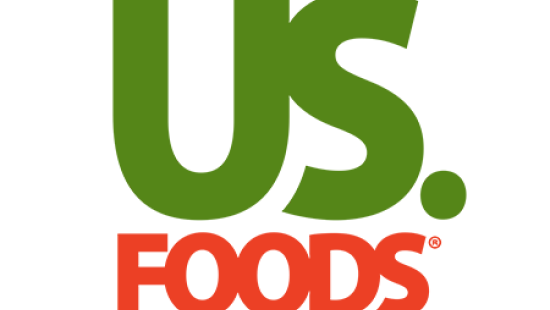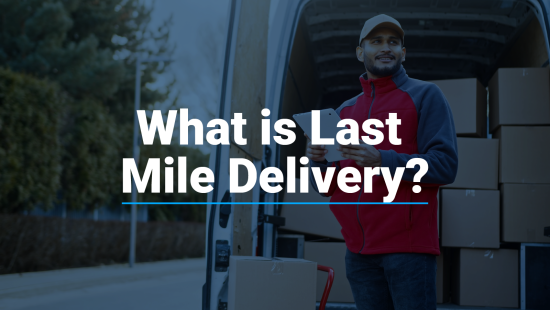In today's fast-paced world, the food industry faces unprecedented challenges in meeting consumer demands for fresh and safe food. And whether it’s food for grocery stores, restaurants, or food banks, final mile logistics plays a critical role in getting those products to their destinations before they can be consumed.
The recent pandemic presented this industry with new challenges and opportunities. In this article, we outline the changes that have emerged and how businesses are innovating their food logistics, especially with technology, to better support customers and enhance distribution performance.

New Challenges Confront Food Logistics Providers
1. Businesses Forced to Adapt to Evolving Customer Demand
Different stages of the pandemic impacted businesses in different ways. For example, early on during government-mandated lockdowns, restaurants were among the hardest hit.
“It was looking at an immediate collapse,” said Ken Wood, EVO Product Management at Descartes, in an interview with Adrian Gonzalez of Talking Logistics. “They were scrambling to try and figure out, ‘what are we going to do in order to stay in business?’”
At the same time, the closure of dine-in and takeout caused a spike in grocery purchases. High-demand commodities were wiped off the shelves.
“There was a lot of discussion with our customers about their ability to shift certain commodities into grocery supply,” said Wood.
To meet shifting customer demand, businesses that once relied on a stable pattern of business began looking at alternative solutions such as dynamic routing and dynamic delivery planning.
2. Labor Shortage Puts Added Pressure on Final Mile Delivery Operations
The driver shortage, which is an ongoing problem that precedes the pandemic, has caused final-mile food logistics businesses to focus on driver attraction and retention. Technology—including effective route optimization solutions—can help alleviate driver stress.
“You want your technology to be something that makes the driver’s life easier and facilitates the quality of their in-cab experience and not be detrimental to it,” said Wood.
Solution Highlight
Route Planning & Optimization
3. Business Model Changes in Food Distribution
Wood doesn’t believe things will ever fully return to how they were. He said recent events have encouraged certain food logistics businesses to consider dynamic operational planning to keep up with the constant stream of customer changes and requirements.
“We’re seeing businesses want to provide more flexibility to the customer and take more advantage of the day’s or week’s order scenario with the assets that are on hand instead of working to a fixed delivery plan,” he said.
Technology Trends in Food Logistics
1. Route Planning Gains Appeal in the Cloud
In moving toward a dynamic model, more food logistics providers are abandoning on-premises and desktop-oriented systems and embracing Software as a Service solutions.
“It impacts what the driver has in their hands from a solutions standpoint. It impacts how the routes get constructed and how the dispatching process is happening. And it impacts the type of communications you need to provide and the transparency and visibility to the customer,” explained Wood.
2. Machine Learning and Artificial Intelligence Improve Plans and Service
With machine learning (ML), fleets can crunch the numbers more systematically and effectively related to their performance around on transit and in-service times.
“You’re accommodating things that in the past you might be looking to make adjustments on from a labor and productivity standpoint,” he said. Plans must be adjusted based on variances and how different elements of the delivery operation perform.
Artificial intelligence (AI) and ML can efficiently collect various inputs and “crunch those numbers down to spin them back into the plan and have the plan adapt to reality.”
3. Tools that Support Collaboration
There is a growing interest in solutions that support collaboration between all team members, from sales to merchandising to logistics workers and customer support.
“They’re all looking at more tools that allow them to stay on the same page,” said Wood.
INDUSTRY WHITE PAPER
Rethinking Route Optimization
When evaluating route planning software, it is important to ensure you validate that route optimization capabilities cover all of your use cases. Download this white paper to learn how your company can become more flexible and productive to thrive in the new normal.
Conclusion
Wood believes there is “more room to run” as it relates to ML technologies, analytics, and automation.
“The industry, as well as the buyers and technology providers, have a bit of a way to go before getting comfortable around letting the machine handle more and more of the application of some of those learnings.”
A hybrid delivery model—which weaves together static and dynamic routes— will continue to unfold.
Finally, on the B2C side of food logistics, he predicts growth in the platforms that embrace third-party delivery providers into the overall planning and visibility funnel.
Fleet Resource Center
Expand Your Routing, Mobile & Telematics Knowledge
Recommended For You



